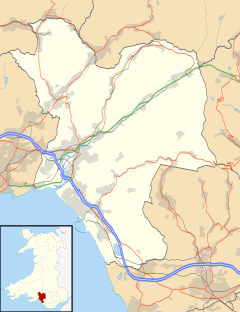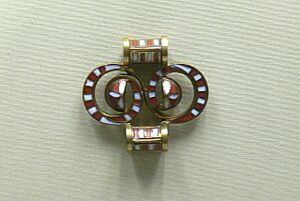Seven Sisters, Neath Port Talbot facts for kids
Quick facts for kids Seven Sisters
|
|
|---|---|
| Population | 2,123 (2011) |
| OS grid reference | SN820088 |
| Principal area |
|
| Ceremonial county | |
| Country | Wales |
| Sovereign state | United Kingdom |
| Post town | NEATH |
| Postcode district | SA10 |
| Dialling code | 01639 |
| Police | South Wales |
| Fire | Mid and West Wales |
| Ambulance | Welsh |
| EU Parliament | Wales |
| UK Parliament |
|
| Welsh Assembly |
|
Seven Sisters (called Blaendulais in Welsh) is a village in the Dulais Valley, Wales, UK. It is about 10 kilometers (6 miles) north-east of Neath. The village is part of the Neath Port Talbot area.
Contents
A Look Back at Seven Sisters
The village of Seven Sisters is famous for its history of coal mining. It was once home to a big coal pit, right in the middle of an area rich in coal. This part of Wales, called the South Wales Coalfield, had some of the best coal in the world.
Many mines and villages grew in this area because of two main things:
- There was a lot of a special type of coal called anthracite. This coal burns very cleanly and gives off a lot of heat.
- A railway line, the Neath and Brecon Railway, was built starting in 1862. This made it easier to transport the coal.
The Seven Sisters Coal Mine
The main coal mine in the village was going to be named after Isabella Bevan, the daughter of David Evans, who owned the mining company. She even helped start the digging on March 11, 1872.
However, because of an old belief about luck, and since David Evans had six sisters who were there, they decided to call the mine "Seven Sisters."
Coal mines that dig for anthracite sometimes have sudden gas explosions. On November 10, 1907, one such event happened, and five men sadly lost their lives. In 1923, more than 600 men worked at the Seven Sisters mine.
During World War II, the mine was shown in a film called The Silent Village. This movie was made to stand against the Nazis.
In the 1950s, the mine faced problems with the ground and changes in the economy. So, in May 1963, the mine closed down. The miners who worked there moved to a nearby mine called Blaenant Colliery, which later closed in 1990.
Life in the Village
When the mine opened in 1875, a community quickly grew around it. The village got its name because Evan Evans, a key person in the area, had one son and seven daughters. At its busiest in 1945, the mine employed over 750 men from the local area.
The first homes built in the village were small, single-story buildings for the coal miners. These homes, called Brick Row, are still there today. As more coal was needed, more mines opened nearby.
A junior school opened in 1884. It cost £530 for the school building and £280 for the school house. In its first year, 33 children were enrolled. The first headmaster, Mr. W.J. Thomas, earned £52 a year.
In 1905, a collection of old bronze objects found earlier in the Bryntêg area was recognized as a very important discovery. These objects are now kept in the National Museum of Wales and are known as "The Seven Sisters Hoard."
The Palace Community Hall
In 1912, Evan Evans Bevan agreed to build a village hall. When it was finished in 1914, it became known as "The Palace." It was used for community gatherings and traveling plays. From 1916, it also started showing films.
In 1925, a group bought The Palace, and it became the Seven Sisters' Miners' Welfare Society. This society helped create a children's playing field, a football field, and an outdoor swimming pool, which was finished in 1932. In 1941, the Society also bought another building and a bowling green.
Seven Sisters Today
The area where the old coal mine used to be now has a special housing complex called Canolfan and a playing field called Ysticlau Park. Some parts of the village's history can still be seen. For example, there are parts of the old winding gear from the mine buried in the ground. There are also five pairs of old railway tracks that show how big the mine was.
Even though the railway still goes through the village, the train station was removed. Now, only freight trains use the line. You can travel to Neath by bus, and other bus services go to Swansea. The old building where miners used to wash after work was turned into an indoor swimming pool, and later into a community hall.
The village also has a rugby union club called Seven Sisters RFC, which started in 1897.
As of 2019, Seven Sisters has a post office, a small shop, hairdressers, a cafe, a takeaway, and a gift shop.
Well-Known People from Seven Sisters
- Richard Ithamar Aaron – a philosopher
- Ruth Bidgood – a poet
- Phil Davies – a rugby player
- Geraint F. Lewis – a professor of astrophysics in Australia
- Valerie James BEM – received the British Empire Medal
- Dennis Gethin – President of the Welsh Rugby Union from 2007 to 2019
See also
 In Spanish: Seven Sisters (Gales) para niños
In Spanish: Seven Sisters (Gales) para niños



